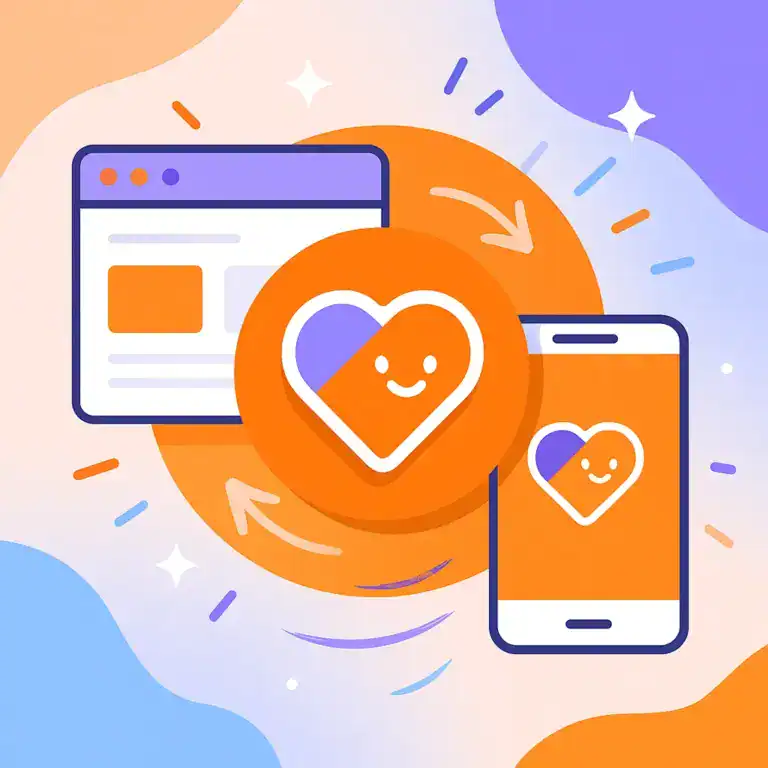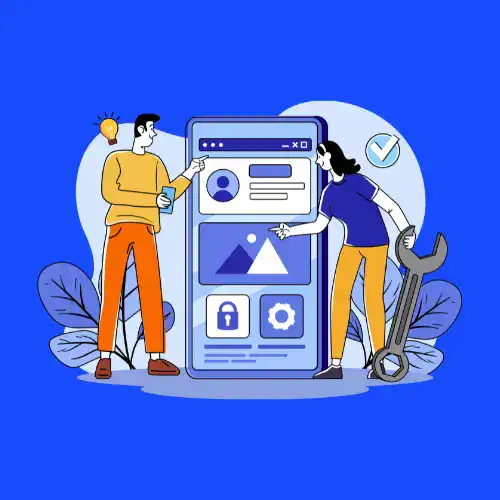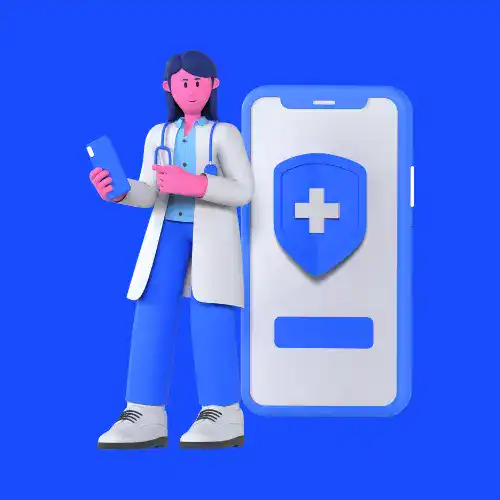How to create an app for iPhone
How to create an app for iPhone: Got an app idea that could change the game? Great! Initially, clarify your app’s purpose. What issue does it address? Who will use it? This clarity is vital for your app’s direction. Start by planning. Brainstorm, plot a roadmap, and decide your app’s features and functionalities. Consider your development platform: iOS, Android, or both. Next, design your app’s user interface (UI). A pivotal aspect, the UI dictates user interaction. Aim for a design that’s not only attractive but also user-friendly and intuitive.
Now, it’s coding time. Your programming prowess is key here, tailored to your chosen platform’s languages and frameworks.Then, rigorously test your app. Identify and fix bugs to ensure seamless functionality.Finally, submit your app to the app store. Adhere to submission guidelines for a smooth process.In summary, app development demands patience, effort, and persistence. Stay focused, and don’t hesitate to seek help. Good luck on your app-building adventure!
Understanding the Requirements
Embarking on mobile app development with a brilliant idea? Before plunging in, it’s crucial to grasp your app’s requirements, forming the cornerstone of your project.Start by pinpointing the problem your app solves. What is the pain point? How will your app add value? Understanding this guides your decisions throughout development.Identify your target audience next. Who will use your app? Tailor your app’s features and interface to their needs. Market research and user surveys yield insights into their preferences.With a grasp of the problem and audience, define your app’s core features. What are its must-have functionalities? List and prioritize these features.
Also, consider technical limitations. Are there hardware or software constraints? Does your app need to integrate with other systems? Acknowledging these early aids informed decision-making.Finally, set a realistic budget and timeline. What resources can you allocate to this project? Setting clear expectations helps manage resources effectively.Understanding your app’s requirements is pivotal for successful development. Analyze the problem, envision your audience, and outline core features. This understanding is akin to laying a solid foundation for your app’s success. Trust this process, and you’re on your way to crafting an exceptional mobile app!
Planning the App Development Process
So, you have a brilliant idea for a mobile app and you’re ready to bring it to life. But before you dive headfirst into coding, it’s important to take a step back and carefully plan out the development process. This will help ensure that you stay organized, meet your goals, and deliver a high-quality app.
Define your goals and objectives
Before you start developing your app, it’s crucial to clearly define what you hope to achieve with it. Are you trying to solve a specific problem, provide entertainment, or offer a new service? Understanding your goals will guide your decision-making throughout the development process.
Research your target audience
Knowing your target audience is essential for creating an app that meets their needs and preferences. Take the time to research your potential users, their demographics, and their expectations. This will help you design a user-friendly interface and incorporate features that will resonate with your target audience.
Outline the app’s functionality
Once you have a clear understanding of your goals and your target audience, it’s time to outline the functionality of your app. Make a list of all the features and capabilities you want to include, and prioritize them based on their importance. This will serve as a roadmap during the development process and help you stay focused on your app’s core functionality.
Create a wireframe or prototype
Before you start writing code, it’s helpful to create a visual representation of your app’s user interface. This can be done through wireframing or prototyping tools, which allow you to design the layout and flow of your app without writing any code. This step will help you identify any usability issues and make any necessary adjustments before diving into development.
Break down the development process into tasks:
Once you have a clear vision for your app, it’s time to break down the development process into smaller, manageable tasks. This can be done by creating a project plan or using project management tools. Assigning tasks and setting deadlines will help you stay organized and ensure that you’re making progress towards your goals.
Consider technical requirements and constraints:
Before you start coding, it’s important to consider the technical requirements and constraints of your app. Which platform(s) will you be targeting (iOS, Android, or both)? Will your app require any external APIs or integrations? Thinking about these technical aspects upfront will save you time and headaches later on in the development process.
Estimate the development timeline and resources:
Developing an app takes time, and it’s important to set realistic expectations for yourself and your team. Estimate how long each task will take and consider any potential roadblocks or delays. Additionally, assess the resources you have available, such as developers, designers, and testers, and allocate them accordingly.
By taking the time to carefully plan your app development process, you’ll set yourself up for success. Remember, Rome wasn’t built in a day, and neither will your app. So, be patient, stay organized, and keep your eye on the prize. Good luck!
Designing the User Interface
Alright, now that we have a clear understanding of the app requirements and a solid plan in place, it’s time to dive into the fun part – designing the user interface!
The user interface (UI) is essentially the visual representation of your app. It’s what users will see and interact with, so it’s important to create a app design that is both aesthetically pleasing and user-friendly.
Here are a few tips to keep in mind while designing your app’s UI:
Keep it Simple and Intuitive
Remember, simplicity is key when it comes to UI design. Avoid cluttering the screen with too many elements or overwhelming the user with complicated navigation. Stick to a clean and minimalistic design that allows users to easily understand and navigate through your app.
Consistency is Key
Consistency plays a vital role in creating a seamless user experience. Use consistent colors, fonts, and button styles throughout your app to maintain a cohesive look and feel. This helps users quickly learn and adapt to your app’s interface.
Prioritize User Feedback
Your app should be designed with the user in mind. Take into consideration their feedback and make necessary adjustments to improve the usability of your app. Conduct user testing and gather feedback to identify any pain points or areas of improvement.
Use Visual Hierarchy
Visual hierarchy refers to the arrangement and organization of elements on your app’s screen. It helps guide the user’s attention and highlights important information. Utilize size, color, and placement to create a clear visual hierarchy that directs users to the most important content.
Don’t Forget about Accessibility
Accessibility is a crucial aspect of UI design. Ensure that your app is accessible to users with disabilities by providing alternative text for images, using appropriate color contrast, and implementing screen reader compatibility. By making your app accessible, you’re opening it up to a wider audience.
Remember, designing the perfect UI takes time and iteration. Don’t be afraid to gather feedback from others and make adjustments along the way. Your goal should be to create an interface that is not only visually appealing but also enhances the overall user experience.
Writing the Code
Alright, now that we have planned the development process and designed the user interface, it’s time to roll up our sleeves and start writing some code! This is where the magic happens and our app starts to come to life.
Choose the Right Programming Language
Before diving into coding, it’s important to choose the right programming language for your app. Consider the requirements of your app and select a language that best suits those needs. Some popular programming languages for app development include Swift for iOS, Java for Android, and JavaScript for cross-platform apps.
Break Down the Tasks
Now that you have a clear understanding of the app’s requirements, break down the tasks into smaller, manageable chunks. This will make the development process more organized and less overwhelming. Create a to-do list and prioritize the tasks based on their importance and dependencies.
Begin with the Core Functionality
Start coding the core functionality of your app first. This includes the features that are essential for the app to work properly. By focusing on the core functionality initially, you can ensure that the app is functional even if other features are still under development.
Follow Best Coding Practices
Writing clean and efficient code is crucial for the success of your app. Follow best coding practices to make your code more readable and maintainable. Use meaningful variable and function names, comment your code to explain its purpose, and adhere to coding conventions specific to the programming language you are using.
Test and Debug Regularly
As you write the code, regularly test and debug your app to catch any errors or bugs early on. Use testing frameworks and tools specific to your programming language to automate the testing process. This will help you identify and fix issues before they become major problems.
Collaborate and Seek Feedback
Don’t be afraid to collaborate with other developers or seek feedback from beta testers. They can provide valuable insights and suggestions that can improve your app’s functionality and user experience. Be open to constructive criticism and be willing to make changes based on the feedback you receive.
Document Your Code
As you write the code, make sure to document it properly. This will make it easier for other developers to understand and work with your code in the future. Documenting your code includes adding meaningful comments, writing clear instructions, and providing examples when necessary.
Optimize for Performance
Finally, optimize your code for performance. This includes minimizing the app’s memory usage, reducing load times, and improving overall efficiency. Users expect apps to be fast and responsive, so optimizing your code will greatly enhance the user experience.
Writing the code for your app can be an exciting and rewarding experience. Remember to stay organized, follow best coding practices, and regularly test your app. Collaborate with others and seek feedback to make improvements, and don’t forget to document your code for future reference. Happy coding!
Testing and Debugging the App
Alright, we’ve made it to one of the most crucial steps in app development – testing and debugging. This is where we put our app through its paces and make sure everything is running smoothly. So grab a cup of coffee, put on your detective hat, and let’s get started!
Test, Test, Test!
Testing is an essential part of app development. It helps us identify any bugs, errors, or usability issues that may exist in our app. So, fire up your device or emulator and start testing your app from top to bottom. Try every feature, every button, and every screen. Take notes of any issues you encounter along the way.
Debugging Made Easy
Once you’ve identified any problems during testing, it’s time to dive into the world of debugging. Debugging is the process of finding and fixing those pesky bugs that can ruin the user experience. Thankfully, modern development tools make this process easier than ever.
Start by going through your code and looking for any errors or inconsistencies. Sometimes a simple typo or missing semicolon can cause a lot of trouble. Take advantage of the debugging tools provided by your development environment. Set breakpoints, step through your code line by line, and analyze the values of variables to pinpoint the exact source of the issue.
Remember, debugging is a skill that improves with practice. Don’t get discouraged if it takes a few tries to find and fix a bug. Keep at it and you’ll become a debugging master in no time!
Test on Different Devices and Platforms
It’s important to test your app on a variety of devices and platforms to ensure it works as intended for all users. Different devices have different specifications, screen sizes, and operating systems, which can affect how your app performs. So, borrow your friend’s iPhone, Android device, or tablet and test your app on different devices to catch any device-specific issues.
Gather Feedback
Once you’ve done your own testing and debugging, it’s helpful to get feedback from others. Share your app with a few trusted friends or colleagues and ask for their honest opinions. They might catch something you missed or provide valuable suggestions for improvement.
Iterate and Improve
Testing and debugging are not a one-time affair. They are an ongoing process that continues even after your app is released. As you gather feedback and user data, make a habit of continuously improving your app. Regularly update your app with bug fixes, performance enhancements, and new features based on user feedback.
Celebrate Your Success!
After all the hard work you’ve put into testing and debugging, it’s time to celebrate your success. Take a moment to appreciate how far you’ve come and the amazing app you’ve created. Pat yourself on the back and get ready for the next exciting phase – submitting your app to the app store!
Submitting the App to the App Store
So, you’ve finally finished developing your amazing app! Congratulations! Now, it’s time to share your creation with the world by submitting it to the App Store. This is where your hard work pays off and your app gets a chance to shine among millions of other apps.
The Submission Process
Before you can submit your app, there are a few important steps you need to follow. Let’s break it down:
- Create an Apple Developer Account: To submit your app to the App Store, you’ll need to enroll in the Apple Developer Program. This program provides the necessary tools and resources to distribute your app.
- Prepare Your App for Submission: Before submitting, make sure your app is fully tested and free of any bugs or issues. You should also ensure that your app meets all the guidelines and requirements set by Apple.
- Prepare Your App Listing: Your app’s listing is the first impression users will have of your app. It’s essential to create a compelling description, catchy screenshots, and an eye-catching app icon. Take the time to think about how you can make your app stand out.
- Submit Your App: Once your app and listing are ready, it’s time to submit them to the App Store. Use Apple’s App Store Connect portal to upload your app, provide all the necessary information, and select the appropriate pricing and availability options.
- App Review Process: After you submit your app, it will go through a review process by Apple. This process ensures that your app meets all the guidelines and provides a safe and enjoyable experience for users. The review process can take anywhere from a few days to a couple of weeks, so be patient.
- App Approval and Release: If your app passes the review process, congratulations! It will be approved, and you’ll receive a notification from Apple. You can then choose the release date and make your app available to users.
Best Practices for a Successful Submission
Now that you know the submission process, let’s take a look at some best practices to increase your chances of success:
- Thoroughly test your app: Before submitting your app, make sure to test it on different devices and iOS versions to ensure it works flawlessly.
- Follow Apple’s guidelines: Pay close attention to Apple’s App Store Review Guidelines and make sure your app complies with them. This will save you time and increase your chances of approval.
- Create an appealing app listing: Invest time in creating a visually appealing app icon, eye-catching screenshots, and a compelling description. This will help attract users and increase downloads.
- Provide excellent customer support: Be prepared to address any user issues or inquiries promptly. Good customer support can significantly impact your app’s reputation and user satisfaction.
- Keep your app updated: Regularly update your app with bug fixes and new features to keep users engaged and satisfied. This shows that you’re actively maintaining and improving your app.
Final Thoughts
Submitting your app to the App Store is an exciting milestone. Make it stand out with the right approach. If you already have a website, you can save time with the AppMyWeb platform, which helps convert it into a mobile app, expanding your reach. Consider Our tailored services for a comprehensive online presence. Success demands dedication, user-centric design, and ongoing support. Best of luck in your digital journey!
Begin by clearly understanding the purpose of your app. Determine the problem it solves, who your target audience is, and what features it will have. This foundational step is crucial for directing the development process.
Focus on simplicity and intuitive design. The user interface should be attractive yet straightforward, allowing users to navigate easily. Consistency in design elements and considering user feedback are also key aspects to keep in mind.
Start with planning your app’s core functionality and features, keeping your target audience in mind. Additionally, it’s essential to consider the technical requirements and limitations early on to make informed decisions throughout the development phase.
Make sure your app is fully tested, adheres to Apple’s guidelines, and has an appealing app listing prepared. Once everything is set, submit your app through Apple’s App Store Connect portal and await the review process.





